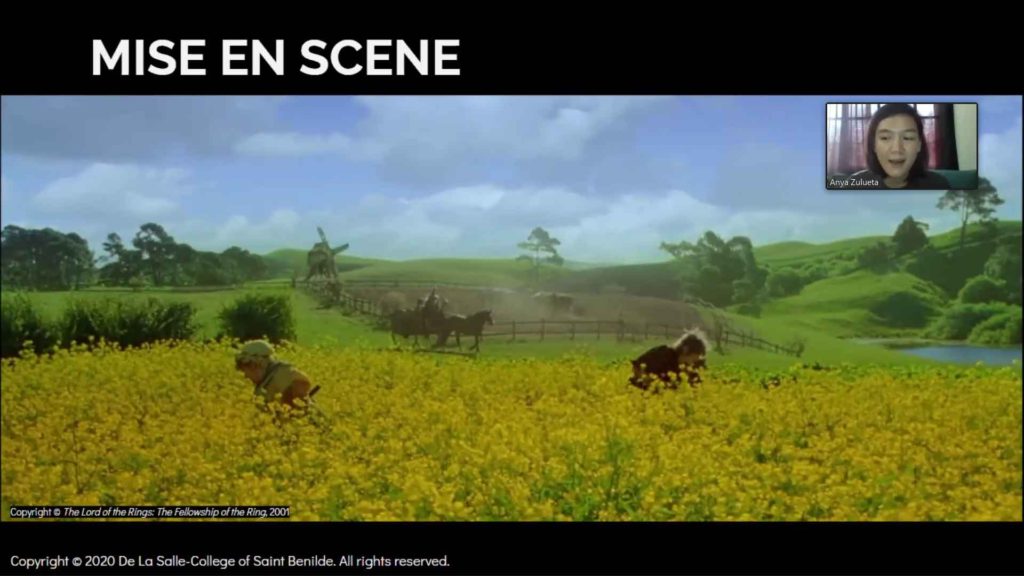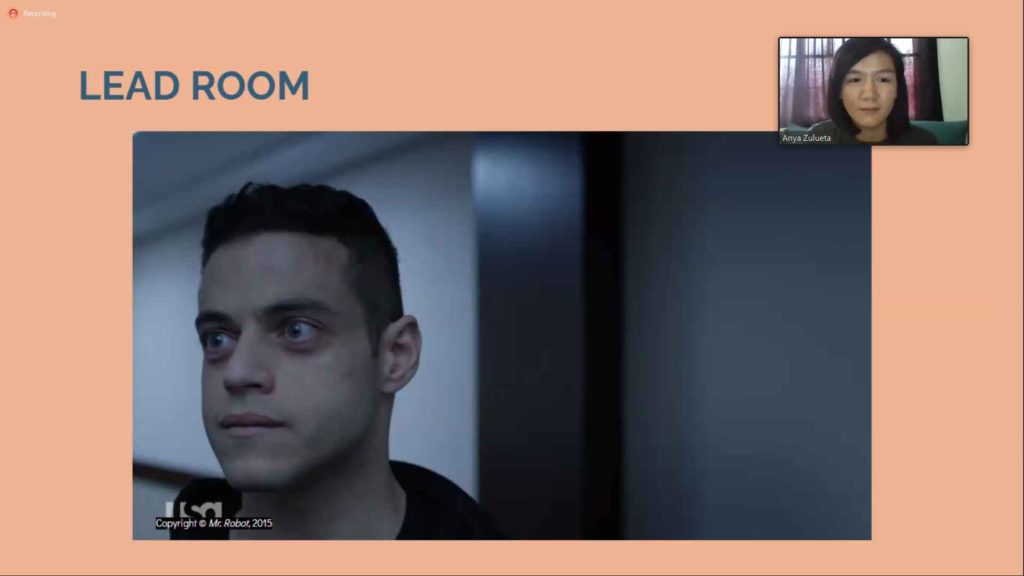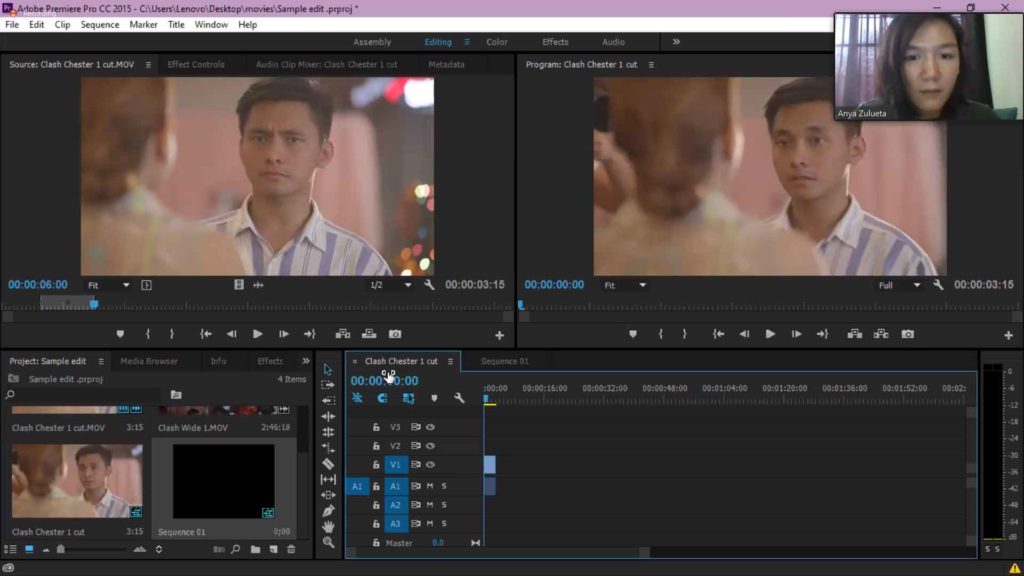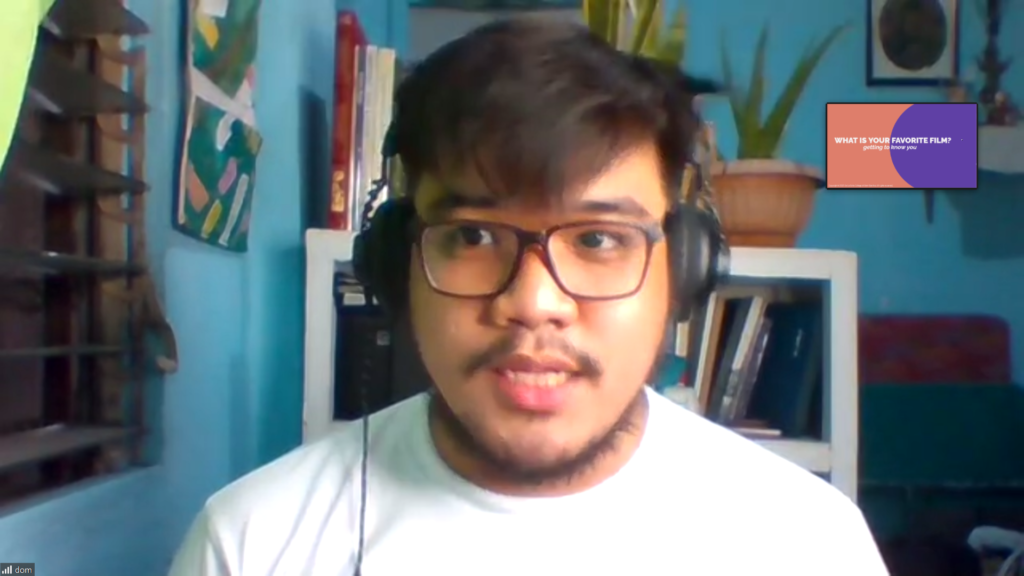In this online workshop, filmmaker Anya Zulueta from Benilde’s Digital Filmmaking Program introduced teens to the techniques of film production. She began the session by distinguishing the three main storytellers of filmmaking—the screenwriter, the director, and the editor. She explained how, in the hands of these three key figures, a story conceptualized from reality would transform from screenplay to footage and finally to film.

Zulueta drew attention to the many artforms involved in filmmaking—actor’s blocking, set design, lighting, costume, music, cinematography—and how these various elements would work together to compose the mise en scene or what the audience sees in a frame. She demonstrated how a scene’s message could be understood by dissecting the mise en scene of key scenes from The Lord of the Rings: The Fellowship of the Ring.

She then taught the teens the language of cinematography and how different kinds of shots and angles could better express a narrative. The teens learned how to identify and differentiate shot types such as establishing shot, master shot, shot-reverse-shot, cutaway shot, and cut in as well as shot sizes like wide shot, close up, and medium shot. She also oriented the teens about the rules of framing and composition in order to emphasize characters and their emotional context.

All these terms might sound technical but the teens were quick to understand them that they could already name the shot or angle used in scenes from movies like The Godfather, Sing Street, Mr. Robot, and The Shining among many others. Zulueta tied together all these cinematic concepts by emphasizing how the filmmaker’s choice of cinematic techniques should provide continuity to keep the audience immersed into the reality of the film.

After the lecture, Zulueta showed the teens a few tricks in using Adobe Premiere Pro for editing their projects. She also shared with them a project made by her contemporaries at Benilde as an example of a well-made short film. The teens were then tasked to practice these techniques by editing together multiple shots from a movie and arranging them in a logical sequence without being told of their original order.

At the end of the program, the participants were given a special Q&A session with Zulueta who was joined by Mark, the independent filmmaker and editor who made the short film shown to the teens earlier. Questions regarding the workings of the film industry, the guests’ takeaways from attending Benilde’s film school, and the presence of artistic dominance were brought up in the discussion, proving the online workshop to be a rich learning experience for the participants.


